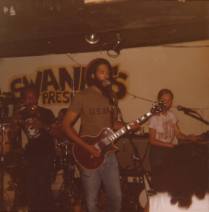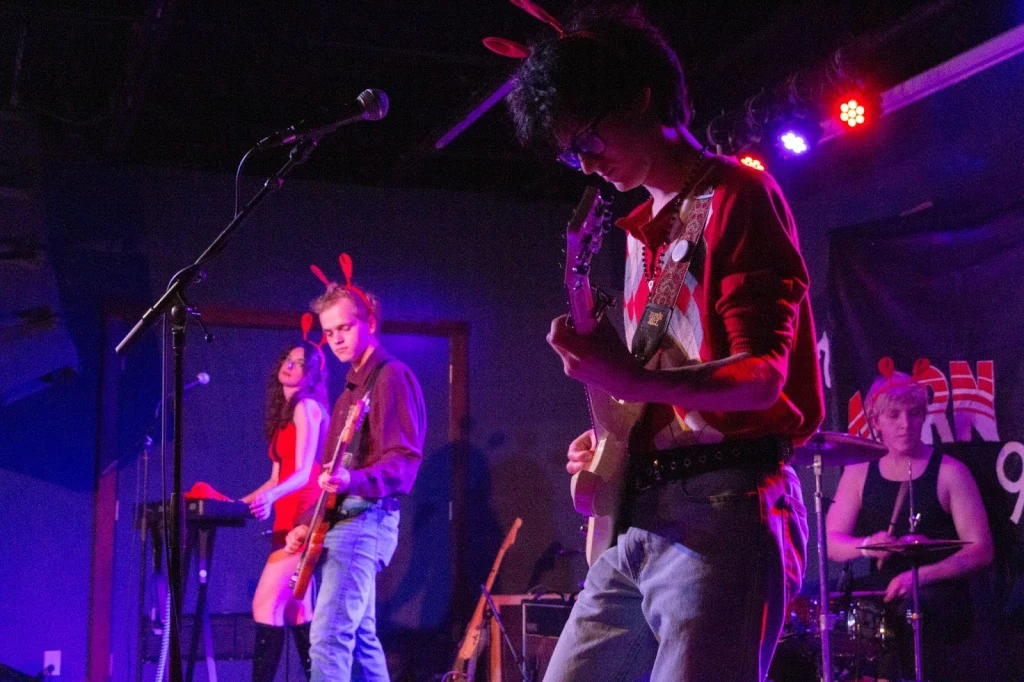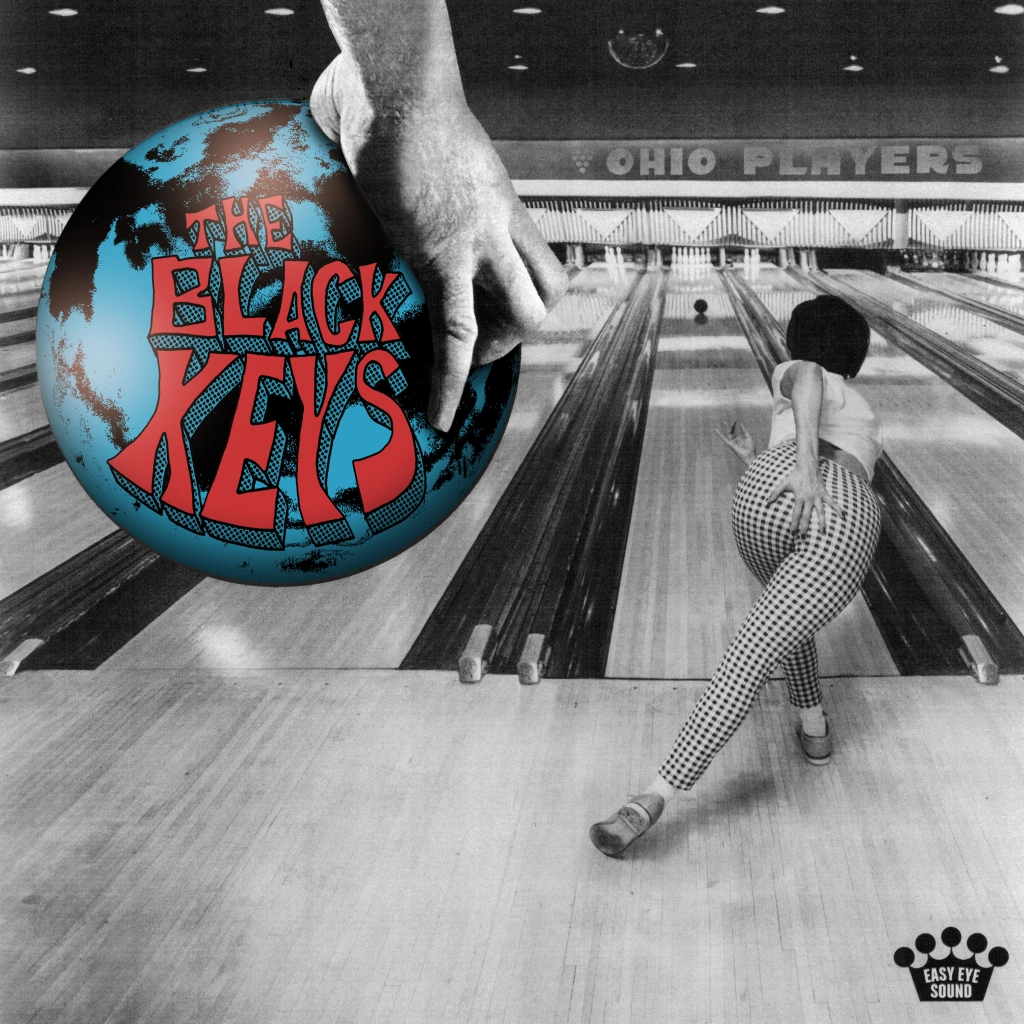By Emily DiAlbert, Staff Writer
On March 9, almost 50 years after getting their start in music, J.D. Hutchison and the Realbilly Jive packed a crowd of Athens, Ohio residents into a local art gallery for a performance evoking pure Appalachian pride. On that night, the band’s audience was not just another crowd of strangers. Realbilly Jive’s Americana repertoire brought the room together as a singing and dancing community that knows—and is proud of—its musical roots.
Today, the music of Athens is rooted in styles, types and genres from all different eras. However, the era that really seemed to set the stage for Athens’ current omnipresent musical culture was that of the 70s and 80s. So, start up your time machine and get ready for a blast to the past.
Mimi Hart, Realbilly Jive’s vocalist, got her start in the Athens scene in the late 1960s when she began school at Ohio University. Over the years, she has traveled to both the Northeast United States and Europe, producing music with several different bands, performing at the White House and with NPR along the way.
Despite her massive success, Hart still resides in her small-town community of Athens, where she performs regularly to unite her community with the sounds of the town that she watched evolve over the past 50 years.
“Music has always been about bringing together the community,” Hart said.
In the 1970s and 80s, the community of Athens, much like today, consisted of both “townies” (residents who are born in Athens and still reside there) and Ohio University students who all had a love for the quaint town and its culture.
“[Athens] was a pretty hippie kind of Woodstock community,” David Smeltz, lead vocalist of reggae band I-Tal, who played in Athens during the early 1980s, described. Smeltz mentioned that the community provided music, people, fun and ever-flowing beer, especially in the uptown area.
“Most of [uptown] was just bars,” Ohio University Alum, Karen Muench, an Athens resident from 1978 to 1988, said.
The bars were there for a reason, of course. In the early 1980s, the drinking age in Ohio was 18 years old. It then changed to 19 in 1984 and to 21 in 1987, where the age has since remained. Because of the reduced drinking age, students often flocked to the bars to drink and listen to tunes during the 1970s and early 1980s, even on a normal school day, Muench explained.
In 1980, there was a total of 27 bars in Athens, according to the corresponding year’s Ohio University yearbook, “Spectrum Green.” Between the 27, music lovers had plenty of options for where to indulge in their favorite genres.
Court Street staples included Mr. Bojangles, which was known for jazz; the Junction, which was known for playing “straight-ahead rock ‘n roll”; and Swanky’s, which was known for adding “a touch of bizarre” to the Athens music culture, according to “Spectrum Green.” Moreover, during that same time, bars such as The C.I., The Union, The Pub and Tony’s, which are still in Athens today, began to establish their roots as community powerhouses.

Smeltz played at Swanky’s several times during the early 1980s, before the bar closed its doors in 1982 when a fire damaged its location.
“[Swanky’s] was always packed,” Smeltz recalled. “We’d start playing and it’d be like a love fest,” he added with a chuckle. “It was just really fun to see people out there sweating and smiling.”
The bars established spaces for “townies” and students alike to come together to enjoy music, but the University also provided plenty of opportunities for residents to celebrate music as a community.
The University-owned Frontier Room, now Front Room Coffeehouse, was a popular restaurant that allowed local musicians to showcase their talent at Open Stage night, according to the Ohio University Archives. Although it was converted exclusively to a coffeehouse in 1989, its tradition of giving local talent a stage stuck with Front Room Coffeehouse.
Additionally, over the era, the University showcased a number of mainstream performers during its annual concert series. The 13,080-seat Convocation Center, where the mainstream music concerts were typically held, was usually full when big names came to Athens, Muench said.
In the early 1970s, the University hosted big names including Ike & Tina Turner, who played at Memorial Auditorium in 1972; Bruce Springsteen and The Eagles who played at the Ohio University Music Festival at the Convocation Center in 1973 and The Beach Boys who headlined J-Prom at the Convocation Center also in 1973, according to the Ohio University yearbooks.
In the later years, the University also hosted other classic stars such as The Doobie Brothers in 1978, Billy Joel in 1980, Hall & Oates in 1984 and The Hooters in 1989.
Despite big-name concerts, the University also held lower-scale Green Fests during the 1970s and early 1980s. The fests took place on different greens (East, West and South) on each weekend of May, ultimately leading up to the pinnacle of the fest season: Spring Fest at the end of the semester.
Much different from today’s fests, the Green Fests and Spring Fest were all sponsored by the University and included bands, activities and beer—lots of it. Prior to 1989, Ohio University permitted students to drink at University events because of the then-lowered drinking age, which led to a high attendance at each fest.
According to the Ohio University Archives, “party-goers would take over the rec fields with blankets and chairs while others would watch and listen from rafts in the Hocking River or across the river on Bong Hill” at Spring Fest.
Members of student organizations would also host different mini-fests to encourage their peers to gain interest in their work. In 1984, Student Senate sponsored “RegFest,” a music festival that also provided tools for students to register to vote, according to the Ohio University yearbooks.
Eventually, the University barred drinking alcohol at school-sanctioned events in 1989, evidently causing low turnout rates for all school-sponsored fests. Spring Fest ended that same year, later being replaced by Palmer Fest in the 1990s, according to the Ohio University Archives.
Among other factors, more-stringent occupancy laws, stricter enforcement of drinking laws and new University policies have made the music culture that highlighted the 1970s and 80s next to impossible to repeat. Regardless, the music that defined the era still remains pervasive in Athens today, whether it be through a classic song being played at a bar uptown or local musicians entrancing audience members with nostalgic sounds at community concerts. Moreover, all that lived during this vibrant era still have their memories to share.
“I haven’t experienced anything like it in a long time,” Smeltz reminisced about Athens’ 1980s music culture. “I wouldn’t have changed a thing.”





Leave a comment